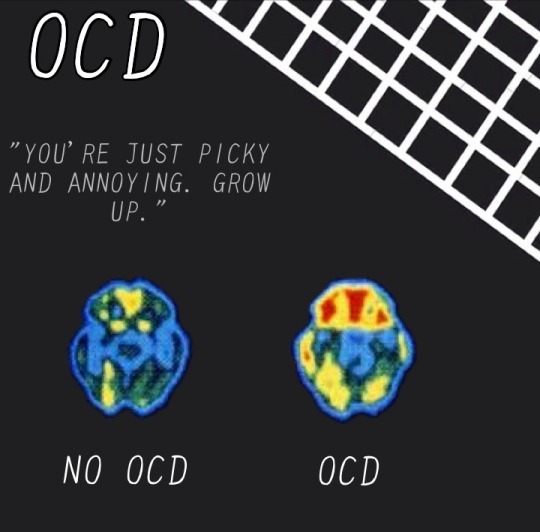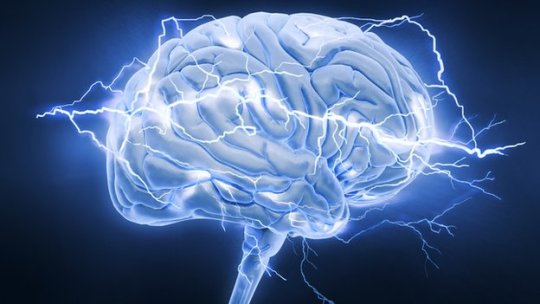Quote
My brother killed himself
on the twenty-eighth Thursday of last year
and I missed four days of work
and my mom wanted to know ‘Why’.
My brother
he was always a fan of beauty
but what he did
was not beautiful at all.
And last week I got the news
that one of my good friends from high school
had overdosed
(again)
except this time
she’d gone too far
and now she was gone.
And I had a hard time falling asleep at night
and her mother
hugged me tight
and thanked me for coming to the service
but I did not
want to be there at all.
This is not
beautiful.
The girl down the street
would’ve turned 21 last year
and I can scarcely imagine
the wild times she would’ve
(should’ve)
had.
But she is buried six feet deep
after falling nearly 300
and she did not leave a note.
This is not
beautiful.
My freshman year of college
and my roommate was beautiful
and how I wanted to be just like her.
But she wore herself down
till she was
almost invisible
and if you blinked
you had to go and find her all over again.
So now her parents are no longer supporting her college tuition
but are paying her hospital bills
watching their daughter crumble.
This is not
beautiful.
So y’all can take your narcissistic
romanticizing
and glamorizing
of self harm and eating disorders and committing suicide
and shove them as far up your ass
as you possibly can.
Starvation is not beautiful.
Killing yourself is not beautiful.
Sadness
is not beautiful.
This note I am writing
is not beautiful.
But you
you are beautiful
and it’s about damn time you start believing it.
(via runiqu)
you should all read this!
(via meowdispute)
798K notes
·
View notes
Photo

A tree frog in Jember, Indonesia, shelters from the rain under a leaf. The amphibian reportedly held the leaf for 30 minutes before the storm passed.
185K notes
·
View notes
Text
I just want to be muscular and walk around naked all the time.
114K notes
·
View notes
Quote
I get way too sensitive when I get attached to someone. I can detect the slightest change in the tone of their voice, and suddenly I’m spending all day trying to figure out what I did wrong.
Humans of New York - Amman, Jordan (via 5000letters)
1M notes
·
View notes
Text
Kinda wanna punch you in the face, kinda wanna suck your dick
38K notes
·
View notes
Photo

Brain Development in Schizophrenia Strays from the Normal Path
Schizophrenia is generally considered to be a disorder of brain development and it shares many risk factors, both genetic and environmental, with other neurodevelopmental disorders such as autism and intellectual disability.
The normal path for brain development is determined by the combined effects of a complex network of genes and a wide range of environmental factors.
However, longitudinal brain imaging studies in both healthy and patient populations are required in order to map the disturbances in brain structures as they emerge, i.e., the disturbed trajectories of brain development.
A new study by an international, collaborative group of researchers has measured neurodevelopment in schizophrenia, by studying brain development during childhood and adolescence in people with and without this disorder. With access to new statistical approaches and long-term follow-up with participants, in some cases over more than a decade, the researchers were able to describe brain development patterns associated with schizophrenia.
"Specifically, this paper shows that parts of the brain’s cortex develop differently in people with schizophrenia," said first author Dr. Aaron F. Alexander-Bloch, from the National Institute of Mental Health.
"The mapping of the path that the brain follows in deviating from normal development provides important clues to the underlying causes of the disorder," said Dr. John Krystal, Editor of Biological Psychiatry.
The findings were derived by investigating the trajectory of cortical thickness growth curves in 106 patients with childhood-onset schizophrenia and a comparison group of 102 healthy volunteers.
Each participant, ranging from 7–32 years of age, had repeated imaging scans over the course of several years. Then, using over 80,000 vertices across the cortex, the researchers modeled the effect of schizophrenia on the growth curve of cortical thickness.
This revealed differences that occur within a specific group of highly-connected brain regions that mature in synchrony during typical development, but follow altered trajectories of growth in schizophrenia.
"These findings show a relationship between the hypothesis that schizophrenia is a neurodevelopmental disorder and the longstanding hypothesis – first articulated by the German anatomist Karl Wernicke in the late 19th century – that it is a disease of altered connectivity between regions of the brain," added Alexander-Bloch.
This theoretical consistency is important, as it allows researchers to better focus future studies of brain connectivity in schizophrenia, by targeting the brain regions known to be affected.
152 notes
·
View notes
Photo




"The brain can get sick too."
End mental health stigma.
795K notes
·
View notes
Text
This website is like a suicide hotline but with text chat instead. I would appreciate it if you guys helped spread the word.
803K notes
·
View notes
Photo

Five mysteries of the brain
For centuries, the brain was a mystery. Only in the last few decades have scientists begun to unravel its secrets. In recent years, using the latest technology and powerful computers further key discoveries have been made.
However, much remains to be understood about how the brain works. Here are five important areas of study attempting to unlock the last secrets of the brain.
How to fix it
When we think, move, speak, dream and even love - it all happens in the grey matter. But our brains are not simply one colour. White matter matters too.
Much of the research into dementia has focused on the tell-tale plaques of beta amyloid and tau protein tangles which occur in the grey matter.
But one British scientist, Dr Atticus Hainsworth says the white matter - and its blood supply - may be equally important.
The white colour results from fatty sheaths around the axons - which are extensions of the nerve cell bodies and help the cells to communicate.
He is using banks of donated brains, in Oxford and Sheffield, to analyse white matter for potential triggers such as leaking blood vessels.
"Some of the cases had an MRI or CT scan and that information can help give more clues about whether there was disease in the white matter - and what its basis might be," says Dr Hainsworth.
If leaking blood vessels in white matter do play a key role in the development of dementia then it may offer up a another potential route for new drug therapies.
How to make us all geniuses
For years caffeine was used to enhance alertness. But popping a pill to get straight-A’s may soon become the norm.
At Cambridge University neuroscientist Barbara Sahakian is investigating cognitive enhancers - drugs which make us smarter.
She studies how they can improve the performance of surgeons or pilots and asks if they could even be used to make us more entrepreneurial.
But she warns that there is no long-term safety information on these drugs and as a society we need to talk about their use.
She says the scientific and ethical challenges created by drugs which affect the production of brain chemicals like dopamine and noradrenaline - which induce pleasurable or “fight or flight” responses - need to be debated in order to decide whether drug-tests become routine before taking an exam.
Dr Sahakian adds: “I frequently talk to students about cognitive-enhancing drugs and a lot of students take them for studying and exams.
"But other students feel angry about this, they feel those students are cheating."
How can we harness our unconscious?
People need to be on top of their game when mastering skills like playing a musical instrument or detecting a bomb.
But research suggests that our unconscious can be harnessed to help us excel.
Repeatedly playing a tricky piece of music obviously helps develop a familiarity with the bits that are most difficult.
But cellist Tania Lisboa, who’s also a researcher in the Centre for Performance Science at London’s Royal College of Music, says it also helps to send the trickier parts of a piece from her conscious to the unconscious part of her brain.
After hours of practice, a fluent musician’s brain stores how to play the piece in an area at the back of the brain called the cerebellum - literally “the little brain”.
Neuroscientist Prof Anil Seth, of Sussex University, says: “It has more brain cells than the rest of the brain put together.
"It helps to promote fluid movements.. So the conscious effort of learning how to bow a cello is moved from the cortical areas which are involved when it’s new or difficult over to the cerebellum, which is very good at producing unconscious fluent behaviour on demand."
Music and defence may not appear to have much in common, but the unconscious can also help detect potential threats, whether it’s a suspicious person in a crowd or the presence of an improvised explosive device.
The unconscious brain is really good at spotting patterns - a skill which Paul Sajda at Colombia University in New York exploits - right at the boundary of the conscious/sub-conscious.
"I can flash 10 images a second and if one of those images has something out of the ordinary..that will essentially cause me to re-orient my brain to that image - but I’m not exactly aware of what that is."
Brain activity is monitored whilst the analyst looks at images so that researchers can later see which images triggered reactions.
What dreams are for
It’s just 60 years since scientists in Chicago first noted the tell-tale “rapid eye movement” or REM sleep which we now associate with dreaming.
But our fascination with dreams dates back at least 5,000 years to ancient Mesopotamia when people believed that the soul moved out of a sleeping body to visit the places they dreamed of.
REM sleep - which occurs every 90 minutes or so - begins with signals from the base of the brain which eventually reach the cerebral cortex - the outer layer of the brain which is responsible for learning and thought.
These nerve impulses are also directed to the spinal cord, inducing temporary paralysis of the limbs.
Prof Robert Stickgold, from the Beth Israel Deaconess Medical Center for Sleep and Cognition in Boston, believes that dreams are vital for processing memory associations.
He has asked the subjects of some of his sleep studies to play Tetris - and then noted their descriptions of how they floated amongst geometric shapes in their dreams.
He’s an admirer of Japanese scanning research where the scientists could “read” the dreams of subjects as they had MRI scans.
But he says it’s hard to get people to sleep in a noisy, expensive scanner.
And the future? “I would like to see research which reveals the rules for dream construction - and how it relates to the larger concept of memory processing during sleep.”
One even more elusive goal: how to dream just happy dreams and ditch the bad ones, especially nightmares.
Can we cure unreachable pain?
Excruciating chronic pain is one of medicine’s most difficult problems to solve.
Untouched by conventional treatments like painkilling drugs, surgeons are now testing their theory that deep brain stimulation could provide relief.
It is a brain surgery technique which involves electrodes being inserted to reach targets deep inside the brain.
The target areas are stimulated via the electrodes which are connected to a battery-powered pacemaker surgically placed under the patient’s collar bone.
One of the pioneers of this technique is Prof Tipu Aziz at the John Radcliffe Hospital in Oxford.
Deep brain stimulation has been used in the past for Parkinson’s disease and depression, and is now being trialled on obsessive compulsive disorder patients as well as those in chronic pain.
One of his patients, Clive, has suffered from terrible pain for nearly a decade after an operation to remove a disc in his neck.
"Sometimes I thought that if I had an axe, I’d chop my own arm off, if I thought it would get rid of the pain."
The doctors explained to him that his brain was getting signals from his arm to his brain confused and that the electrodes could help.
In Clive’s case this was an area of the brain called the anterior cingulate.
A week after his surgery he was one of the fortunate 70% of patients for whom the deep brain stimulation provides relief.
"It’s great to be out of that pain now. Since having the implant I can sit down for longer, I am able to walk further, everything is an improvement."
Prof Aziz is treating medical conditions. But he is aware of ethical dilemmas which could arise if the technique was applied to other areas.
"Putting electrodes in targets to improve memory.
"Or you could put electrodes into people to make them indifferent to danger and create the perfect soldier."
472 notes
·
View notes
Text
goals for 2014
get hella fit
improve art
eat healthier
do well in school
give less fucks
get rich
580K notes
·
View notes
Link
“Good to see you. I’m sorry. It sounds like you’ve had a tough, tough, week.” Spoken by a doctor to a cancer patient, that statement is an example of compassionate behavior observed by a University of Rochester Medical Center team in a new study published by the journal Health Expectations.
218 notes
·
View notes
Text
Neurobiological etiology
Depression is very complex and there is still no correct answer as to what causes the onset. There are three main recognized theories
The Monoamine Hypothsis
-Depression results primarily from the dysfuntions to monamine neurotransmitter systems. (serotonin, dopamine, norepinephrine)
The Glucocorticoid Hypothesis
-Depression results from over-activity of the HPA axis. Also called the stress hypothesis.
The Cytokine Hypothesis
-Depression results from the over-activity of cytokines and other immune signalers.
For more information on these you can look them up on Scientific America or any psychological website.
0 notes
Text
Disclaimer.
This is for a school project. This is not professional advice. If you are seeking serious help please refer to the helplines page. It has helplines and other organizations where you can get the necessary help.
0 notes
Text
Frequency and origin
Schizophrenia affects approximately 1 in 100 people in North America. It is classified as a psychotic disorder. The term Psychosis comes from the Greek word psyche which means a loss of contact with reality.
0 notes
Text
Myths
Addressing the Myths:
Myth: People with schizophrenia and violent and dangerous.
Individuals who are being treated for schizophrenia are not more violent than any other individual. They are a greater danger to themselves with high risks of self-harm and suicide.
Myth: People who have schizophrenia see things that are not there:
Schizophrenia is characterized mostly by auditory hallucinations. Visual hallucinations are much less common.
4 notes
·
View notes
Video
youtube
This video shows interviews with patients living with schizophrenia and mental health professionals who treat them. It shows how people diagnosed with schizophrenia can live normal lives.
1 note
·
View note
